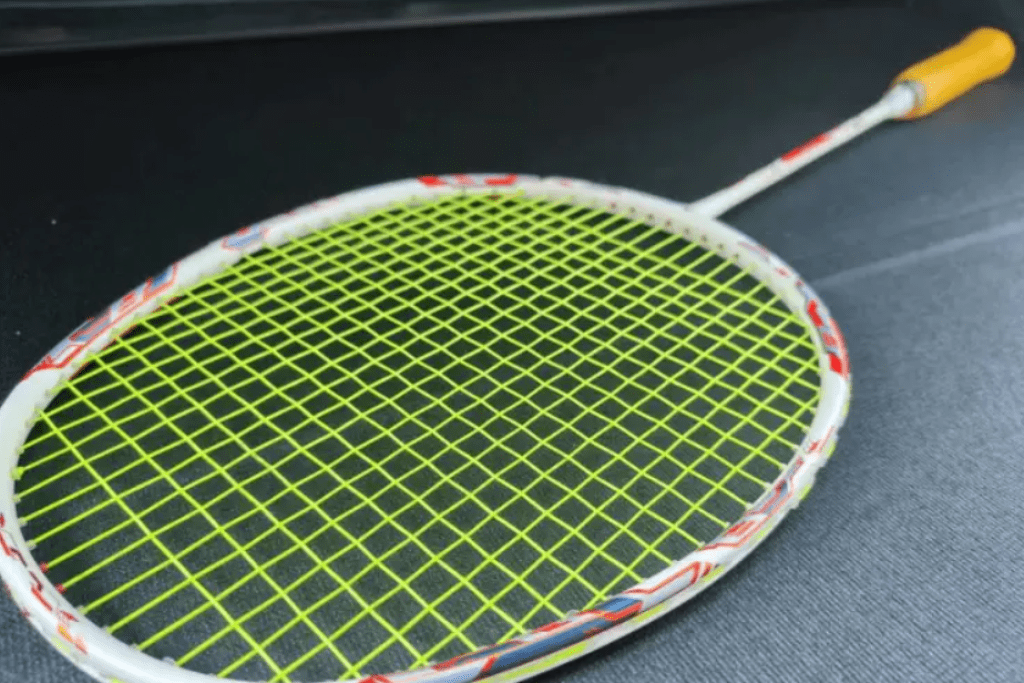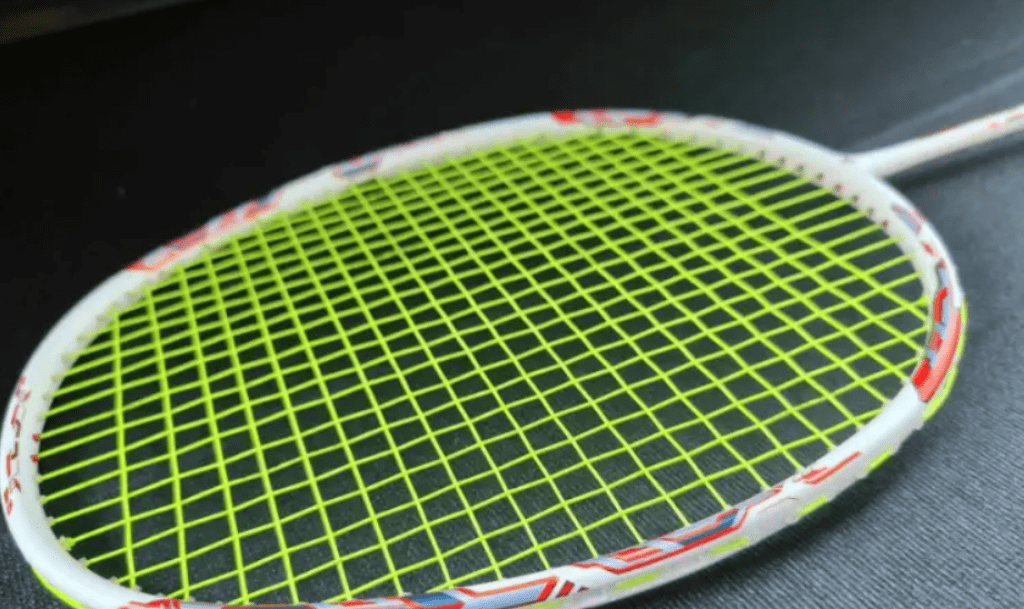Kawasaki’s entry-level models are produced in large quantities, and new models are released every quarter. In addition to the official models, Kawasaki also handles a lot of custom rackets for retailers, showing that their production capacity is quite robust.
What’s intriguing is that Kawasaki not only meets the demand but also maintains high quality in this category. Whether for casual play or for competitive entry-level rackets, their extensive product line offers suitable options for consumers. Furthermore, I often find satisfactory experiences with their two- and three-star rackets from the old rating system. The materials used in these rackets are transparent and reflect the manufacturer’s tuning skills.

Parameters: Aurora 5UG5, with shrink film, total weight in play 88.94g, balance point 299mm, shaft length 213mm, relatively low stiffness, box-type frame, 76-hole string bed, 9-3 o’clock string grooves, warranty for 30 lbs, string tension 24 lbs durable string.
Kawasaki clearly puts effort into the visible parts of their rackets. Their style, even in low-end rackets, is to use good appearance design and paintwork. The Qinghua porcelain series is a good example of this. The Aurora, similar in its fresh and slightly feminine style to Qinghua porcelain, features glacier blue and deep green colors, evoking the cold polar night sky. The color blocks have a gradient transition, giving a natural look to the wings of the frame, and the use of stickers is restrained, giving it a simple European style. Although I associate Aurora with vibrant visual effects, the current Aurora is much more understated, but still aligns with my aesthetic.

The light specification combined with the soft setting is clearly aimed at beginners. The standard fluid box-type frame and 76-hole string bed provide high stability and error tolerance. In routine high clears, the racket shows excellent handling, allowing for easy shaft deformation and elasticity, sending the shuttlecock to the opponent’s baseline effortlessly. Not only is the handling easy, but the physical demands are also very low, and the current quality of the Aurora is already satisfactory. The racket’s elasticity is above average for its level and uses 30T material. A slightly firmer stiffness setting would be even better.

In faster-paced exchanges, the Aurora has its pros and cons. The advantage is its lightweight performance, making transitions between forehand and backhand and continuous frame adjustments quick. With a low threshold for generating power, it’s also effective in defensive play and retrieving shots. The downside is the racket’s sluggish character; although the swing is fast, the shuttlecock doesn’t come off directly, and the recovery speed of the shaft after deformation is slow, leading to instability after a few shots.

Among 5U entry-level rackets, the Aurora performs above average in close-net shots. It doesn’t feel too erratic and has a decent ball-holding feel due to the ample string bed area. It’s easy to achieve stable actions and consistent shot quality when performing drop shots and net shots. The shuttlecock has a clear holding sensation, making it possible to execute tight net shots with a cut action from the backcourt. This is one of the aspects I’m most satisfied with.
In simple terms, even for intermediate players, the Aurora can still deliver a good experience.

Parameters: GTI 4UG5, with shrink film, total weight in play 91.03g, balance point 297mm, shaft length 215mm, medium stiffness, box-type frame, 76-hole string bed, 9-3 o’clock string grooves, warranty for 30 lbs, string tension 25-27 lbs BS710.

The GTI features a mecha style in its paintwork, inspired by VW’s famous small steel cannon. The bright red stickers on the frame at 2, 10, 5, and 7 o’clock create a combat atmosphere. The red stickers on the shaft make the racket look flashy, though this makes the model number less visible. Compared to the Aurora, the GTI’s visual appeal feels more ordinary to me.

The GTI’s feel is noticeably more substantial than the Aurora, with improved specifications and head weight distribution showing a certain heft. The medium stiffness of the shaft provides a more solid feel when hitting. The GTI is also easy to drive, but offers more power and is more suitable for male players. The feeling of sending the shuttlecock high and far into the opponent’s court is similar to many other entry-level rackets, which is straightforward and well-understood.

While the increased stiffness and swing weight don’t make the GTI more difficult in passive or defensive play, it remains light and easy to use. The feel in defensive drives is quite manageable, and in faster-paced rallies, the racket head responds better and maintains stability through multiple shots. The swing speed and agility are slightly reduced, but the impact is minimal. Powering through defensive shots or smashes remains effortless without the hindrance of excessive head heaviness or high stiffness. However, compared to the TU-160, noticeable differences can be felt.

In terms of small ball control, the GTI performs adequately, without outstanding or poor characteristics. The feel is primarily influenced by the racket’s weight distribution. Compared to the TU160, the GTI feels more solid. However, the GTI, like the Aurora, has noticeable power transmission issues, with a clear lack of force in powerful smashes. There is a feeling of insufficient explosiveness, and while the GTI may handle gentle downward shots better than the Aurora, its performance ceiling does not show significant differences. The additional power mainly comes from increased head momentum and the illusion of feedback from the stiffer shaft.
Both of these rackets are ones where users may reach their limits as their skill level increases, especially in offense. They suffer from insufficient downward force, with significant shaft deformation during heavy smashes and a lack of explosiveness. The responsiveness of the racket face is hesitant, and the rhythm in attacks is delayed.
For competitive play, they have quite a few shortcomings. However, trying out entry-level products occasionally can be beneficial after more serious competitive testing. These rackets are better suited for beginners or as gifts for new players, and they are indeed a reliable option.

Leave a Reply